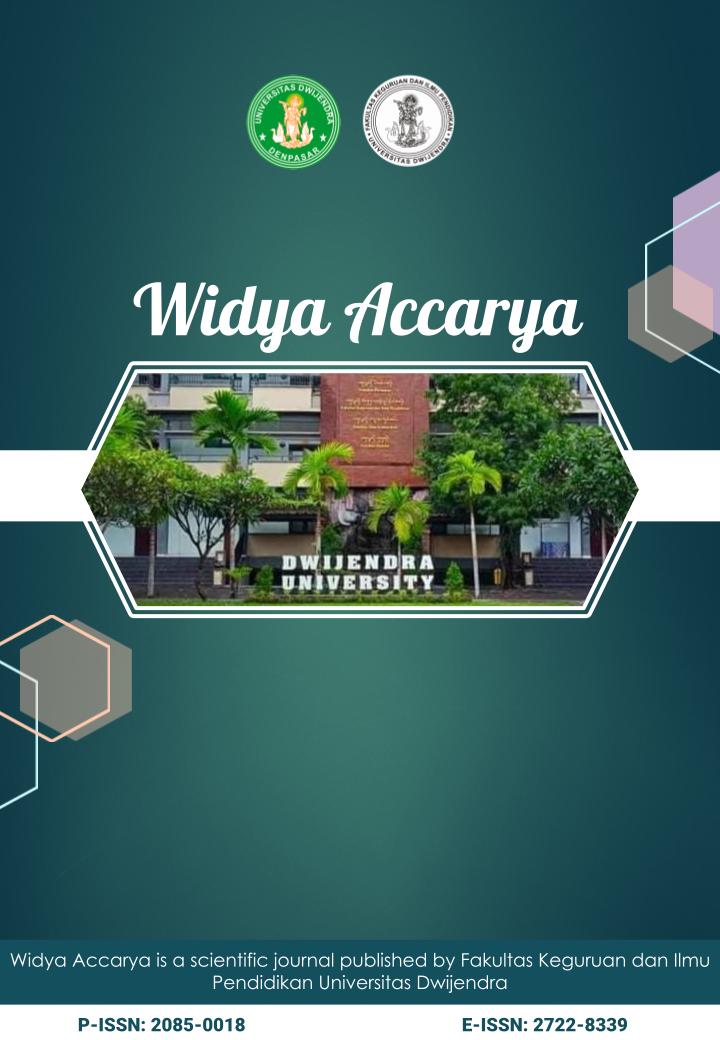Quality of Education Services and Community Satisfaction with SDIT Using The Servqual Model
DOI:
https://doi.org/10.46650/wa.15.1.1529.26-34Keywords:
Community satisfaction, SDIT, Service quality, ServQualAbstract
References
Ahmad. (2016). Manajemen Sekolah Islam Terpadu. Jurnal Ilmu Pendidikan, 22(1), 1–8. https://doi.org/10.17977/jip.v22i1.8638
Anshori, A., Solikhah, N. A., Aqil, D. R., Musyafa, M. A., & Apriyanto, S. (2022). Dynamic and New Paradigm of Islamic Education in Indonesia. Scaffolding: Jurnal Pendidikan Islam Dan Multikulturalisme, 4(2), 232–245. https://doi.org/https://doi.org/10.37680/scaffolding.v4i2.1573
Bahiyyah, F. D., & Wibowo, U. B. (2019). Analisis Kualitas Layanan Akademik Madrasah dengan Metode Servqual pada Pendidik dan Tenaga Kependidikan. Kelola: Jurnal Manajemen Pendidikan., 6(1), 1–10. https://doi.org/https://doi.org/10.24246/j.jk.2019.v6.i1.p1-10
Bahri, I. S. (2018). Strategi Peningkatan Kualitas Jasa Pendidikan Islam di MIN Demangan Kota Madiun. Muslim Heritage, 3(2), 287–306.
Cronin, J. J., & Taylor, S. A. (2002). Measuring Service Quality: A Reexamination and Extension. Journal of Marketing, 6, 55–68.
Damanik, D. A. (2019). Kekerasan Dalam Dunia Pendidikan: Tinjauan Sosiologi Pendidikan. Jurnal Sosiologi Nusantara, 5(1), 77–90. https://doi.org/10.33369/jsn.5.1.77-90
Hair, J. F., Black, W. C., Babin, B. J., & Anderson, R. . (2019). Multivariate Data Analysis. (8th ed.). New Jersey: Prentice Hall International Inc.
Hidayat, A., Fatimah, S., & Rosidin, D. N. (2022). Challenges and Prospects of Islamic Education Institutions and Sustainability in the Digital Era. Nazhruna: Jurnal Pendidikan Islam, 5(2), 351–366. https://doi.org/. http://repository.syekhnurjati.ac.id/id/eprint/6414
Ismael, F., & Iswantir. (2022). Konsep Pendidikan Sekolah Islam Terpadu. Jurnal Penelitian Ilmu Pendidikan Indonesia., 1(2), 127–134. https://doi.org/10.31004/jpion.v1i2.30
Kotler, P., & Fox, K. F. A. (1995). Strategic Marketing for Educational Institutions (2nd ed.). New Jersey: Prentice Hall, Inc.
Marjukah, A., Nugroho, A. J. S., Haris, A., Jati, A. N., & Almasitoh, U. . (2024). The Moderating Effect on Community Intention to Believe in Excellent Islamic Schools Education. Al-Hayat: Journal of Islamic Education, 8(1), 98–112. https://doi.org/https://doi.org/10.35723/ajie.v8i1.507
Muttaqin, I. (2023). Brand Personality Dimension for Islamic Educational Intitution. Indonesian Journal of Islamic Education Studies, 6(1), 33–49. https://doi.org/10.33367/ijies.v6i1.3757
Parasuraman, A., Berry, L. L., & Zeithaml, V. A. (1998). A Conceptual Model of Service Quality and Its implication. Journal of Marketing, 49(fall), 41–50.
Prakash, A., & Phadtare, M. (2018). Service Quality for Architects: Scale Development and Validation. Engineering. Construction and Architectural Management, 25(5), 670–686.
Republika. (2024, January). Dewan Minta Disdik DKI Cabut KJP Pelajar yang Terlibat Tawuran di Jakarta.
Resti, N., Sardin, & Utami, N. F. (2023). Pengaruh Pola Asuh Permisif terhadap Pelaku Tawuran Pelajar SMA di Sukabumi. Dimesia: Jurnal Kajian Sosiologi, 12(1), 25–30. https://doi.org/https://doi.org/10.21831/dimensia.v12i1.60865.
Downloads
Published
How to Cite
Issue
Section
Citation Check
License
An author who publishes in the Widya Accarya agrees to the following terms:
- Author retains the copyright and grants the journal the right of first publication of the work simultaneously licensed under the Creative Commons Attribution-ShareAlike 4.0 License that allows others to share the work with an acknowledgement of the work's authorship and initial publication in this journal
- Author is able to enter into separate, additional contractual arrangements for the non-exclusive distribution of the journal's published version of the work (e.g., post it to an institutional repository or publish it in a book) with the acknowledgement of its initial publication in this journal.
- Author is permitted and encouraged to post his/her work online (e.g., in institutional repositories or on their website) prior to and during the submission process, as it can lead to productive exchanges, as well as earlier and greater citation of the published work (See The Effect of Open Access).
Read more about the Creative Commons Attribution-ShareAlike 4.0 Licence here: https://creativecommons.org/licenses/by-sa/4.0/.

















